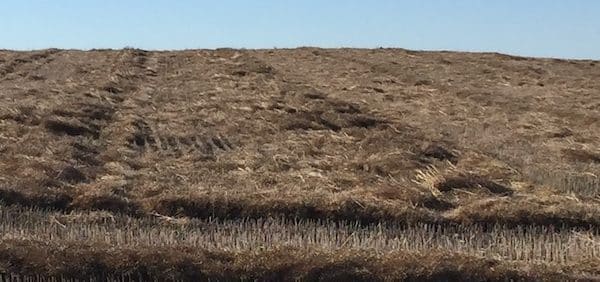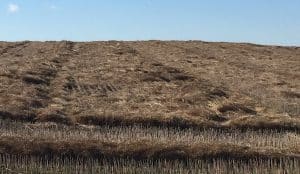Step 1: Contact crop insurance. They may need to assess the loss before harvest can proceed.
Step 2: Combine once the crop is cured. The damaging wind in combination with the now-open swaths may speed the curing process. When combining, focus on swaths left in place or, if swaths are blown far and wide, consider using a straight-cut header to gather them up.
ACPC director Kevin Serfas makes the following recommendation based on his experiences in windy southern Alberta:
“Concentrate on the main swath that is still remaining. At the end of the day, that is where the majority of your canola is. After that, you will have to survey what is left in the field. It may be worth your time to take a couple passes up and down in between the swaths that you combined. Be prepared to steer a lot. Shut off the GPS because you will be going side to side and backwards as much as forward. Something that we learned this year is pod shatter varieties aren’t just for straight cutting. They don’t shell when the swaths get wind blown.”
Step 3. Think about volunteer management. The first step is to do nothing. Leaving seeds undisturbed so they germinate in the fall or get eaten by birds and insects is a good way to reduce the volunteer seedbank. Canola seeds that remain on the soil surface when the snow flies will deteriorate over the winter. Read more.
Step 4. Consider how this may be prevented. Cutting high and tucking swath edges into the stubble can limit wind loss. Swathing in the same direction as the most common winds (swath east-west when prevailing winds are from the west, for example) will reduce the risk. Straight combining might be the better option, especially in a thin or short crop that will not leave a lot of stubble to hold the swath. In windy conditions, a shatter-tolerant variety will not only reduce losses for standing crop but for swathed crop as well. Read more.


